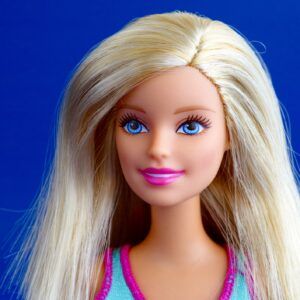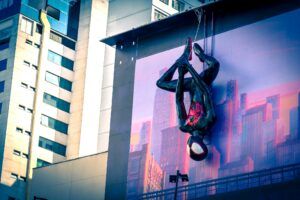Happy Oscar season! As we ramp up for film's most anticipated event, the lists start flying for the year's potential winners. Frequently, the Academy favors somewhat obscure, esoteric films—so it might be surprising to learn how many nominees are, in fact, adaptations of existing art. Look no further than this year's top contenders for examples of this, including Oppenheimer, American Fiction, Killers of the Flower Moon, Poor Things (all based on books)—and, of course, Barbie.
In addition to the Oscar contenders, the majority of 2023's highest grossing films, from Across the Spider-Verse to The Super Mario Bros Movie, were based on preexisting IP and adapted for the big screen.

How has this come to be? Likely good business sense. One aspect of copyright law that makes adaptations attractive is derivative works. A derivative work is a work based on one or more existing copyrighted works. Only the original copyright owner has the right to authorize someone else to create an adaptation of his or her work, but licensing arrangements can be a win-win deal for copyright owners and studios alike—for owners, by receiving valuable royalties from such deals, and for studios, by generating buzz and increased profits from properties recognized and beloved by the public.

A derivative work is itself subject to copyright where it incorporates the existing work and adds new, copyrightable material to it, which is almost always the case. In practice, this means that film studios can own the copyrights to their films, while also taking substantial inspiration from other copyrighted sources. The most common "work-to-derivative work" pipeline is from books to films, but Barbie's toy-to-film pipeline presents an interesting question: if a movie is based on a doll alone, does that make the movie somehow a derivative work of a doll?
That might be debatable if indeed the film were based on a single doll, but that's not the case here. Rather, the Barbie movie may constitute a derivative work of numerous of Mattel's copyrights, including the dolls, product packaging, books, promotional materials, and countless other prior works featuring the titular doll and her friends. It is, in any event, a licensed blend of various types of IP—not only copyrights, but also many of Mattel's well-known trademarks, the foremost of which is the long-registered trademark "BARBIE®" itself.

Studios will usually work through licensing deals to smooth out the creation of adaptations. Indeed, established studios typically wouldn't proceed without one: consider, for example, how Barbie did not appear as a character in the beloved Toy Story series until Toy Story 3, after a licensing deal was struck between Disney/Pixar and Mattel. And it's hard to imagine a world where Greta Gerwig would have risked making Barbie without getting the green light first, unless, perhaps, she pushed it hard enough to tread into parody territory for both copyright and trademark fair use purposes. That would have been a very different film! But if Aqua could make it work with "Barbie Girl"...
For those that choose to forgo the traditional licensing route, an adaptation can become a tricky matter. Even into late 2023, a 2022 Best Picture contender, Top Gun: Maverick, remained embroiled in a dispute involving derivative works. In Yonay v. Paramount Pictures, filed in June 2022, Plaintiffs alleged that Top Gun: Maverick infringed Ehud Yonay's article "Top Guns," which was an account of the real-life U.S. Navy Strike Fighter Tactics Instructor program, colloquially known as "Top Gun."

Paramount was unsuccessful on its motion to dismiss, failing to convince the California Central District Court that there was no case for the film's substantial similarity to the article. (It likely didn't help that the studio had once had an exclusive licensing deal with Yonay before the copyright was reclaimed by his heirs shortly prior to Maverick.)
This past November, Paramount filed its motion for summary judgment, arguing that the aspects of Yonay's article at issue were mere facts derived from research and consultation with the Navy—uncopyrightable material under Feist v. Rural. The Yonays, in their own summary judgment motion, assert that Maverick constitutes an unauthorized derivative work. They argue that the "Top Guns" article is not a mere collection of facts, but rather a "cinematic portrayal" of the navy base's activities, directly inspiring several events of the film.
It remains up to the court to decide whether Maverick is sufficiently distinguishable from other sources of inspiration. But at least for us viewers, the Oscars are a great way to see how movies can use this simple copyright concept to create films that shine.
To view Foley Hoag's Trademark and Copyright Law Blog please click here
The content of this article is intended to provide a general guide to the subject matter. Specialist advice should be sought about your specific circumstances.

